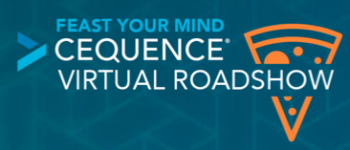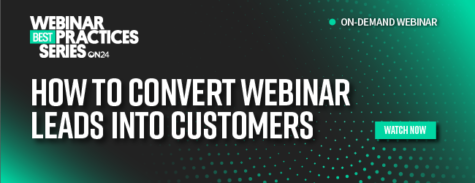4 Best Practices Cequence Security Used for Its Virtual Road Show

Even cybersecurity vendors — like those specializing in protecting APIs, risk monitoring and cyberattack detection — like to go on the road. In fact, roadshows are often so successful that Linda Sim, Cequence’s Security’s Director of Marketing and Inside Sales, decided to take the company’s message on the road in 2020. The goal? To showcase the firm’s products and providing demonstrations to prospects.
That roadshow didn’t happen. Instead, Cequence had to transition the company’s physical events to a webinar series and — as a result — saw a 500% increase in webinar registrants.
To do this, the Cequence team created a three-part webinar series (currently ongoing) called “Feast Your Mind.” The series focused on how organizations can use Cequence’s API monitoring software to protect themselves from cyberattacks.
Each of the three webinars addressed a different topic related to cybersecurity and how the company’s services can help users prepare for imminent threats.
The Best Practices Cequence Deployed for its Virtual Roadshow
Best Practice 1: Cequence Makes Its Webinar Program Regular and On-Demand
The webinars in the virtual roadshow followed the best practices for running a webinar program. It produced its events on a monthly cadence and made each episode available on-demand so audiences can review the company’s content on their own time.
Best Practice 2: Cequence Consolidates Its Roadshow Content In a Content Hub
To make access to its on-demand webinars easier, Cequence also followed another best practice: make events available in a content hub.
On the resources page, Cequence’s team listed out all of the firm’s gated content in a content hub, empowering its visitors to easily filter to the content they’re looking for. Take a look:

Best Practice 3: Cequence Gives Its Roadshow Unique Branding
Roadshows, summits and series — even if they are virtual — are events. So, its makes sense to make your event stand out.
Cequence’s events nailed a virtual roadshow (and webinar program) best practice by making its series easily identifiable with unique branding. As you can see in the screenshot below, each iteration of the virtual roadshow uses the same branding. With this unified branding, audiences can easily identify events within a particular series — especially within its resource hub.

Best Practice 4: Cequence Offers Roadshow Incentives
Part of the appeal of attending roadshows and summits is that you — as an attendee — get something out of it. Usually, that’s food (and maybe information on a product you’re interested in).
But providing a take-away or incentive is difficult on virtual channels since companies and audiences can’t directly interact in person.
To get around this, Cequence followed another best practice for virtual events and offered registrants a chance to win a $25 pizza gift card:

As a bonus (and smart marketing), Cequence tied the series’ name, branding and incentive under one theme: food for thought.

The Virtual Roadshow Results from Cequence

Cequence’s virtual roadshow was a pilot program and its goal was to test whether webinars could successfully help the company capture new leads and build on its customer loyalty. The program exceeded its expectations.
The performance results in three months since the launch of “Feast Your Mind” have been outstanding. The Cequence team has seen more than a 500% increase in webinar registrants and the company’s attendee conversion rate has increased from a 15% average to a 60% average.
The results of the “Feast Your Mind” webinar series solidified the series, which is now a full-fledged and ongoing program.
For the Cequence team, the virtual roadshow is the company’s most successful webinar series and has helped to bring in new leads and nurture its database. The marketing team has grand plans for the program and hopes to maintain its webinar program even as physical events regain popularity.
But why?
Because, as the Cequence team found out, this virtual roadshow led to increased engagement with customers and prospects and resulted in more leads.
And the team did so while producing a more cost-effective event that requires fewer resources than physical events.
Lastly, the marketing team is taking advantage of on-demand capability, allowing them to get more use out of their webinars. Just as exciting, the team is capitalizing on the success of the initial three-part series and is expanding the virtual roadshow to include additional topics.
